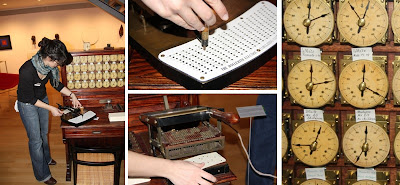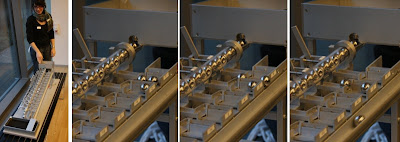Desktop Video Conference – Setup time 5 Seconds
Earlier I had a tele-conference with Christian Becker and Gregor Schiele (we still try to write a book 😉 and I tryed MeBeam.com for the video. And to my great suprise it work instandly and well and the conference setup took about 5 seconds – open website, chose a name for the conference, distribute the link over skype. And as one can see video adds another quality to the conversation 🙂
Rating your professor, teacher, doctor, or fellow students?
This morning I was coming back from Munich* on the train I got a phone call from a journalist from Radio Essen (http://www.102.2radioessen.de/). As their studio is very close to the railways station in Essen I went there spontaneously before going back to University.
* travelling from Munich (leaving at 22:30) and arriving in Essen in the morning (or Darmstadt) works fairly well and if you stay in a hotel in Stuttgart 😉 – it is surprisingly a real alternative to a night train or an early morning flight…
No 3 ;-) Paul defends his PhD – Congratulations!
Paul Holleis defended today his PhD thesis on „Integrating Usability Models into Pervasive Application Development“ in Munich – My No.3. He worked together with Matthias on the DFG project “Embedded Interaction”. Paul is now with Docomo Eurolabs in Munich.
Mechanical Computing, Beauty of Calculating Machines

 Having learned binary calculations during the DSD course it was nice to see a machine that did binary additions, using small steel balls and gravity. On each place (1,2,4,8, …) there is space for one ball. If a second one comes to this place one moves up to the next place (carry) and one is discarded. This is implemented with very simple mechanics and the working prototype (recently build) is based on designs of Schickard (but he never built – if I am correct).
Having learned binary calculations during the DSD course it was nice to see a machine that did binary additions, using small steel balls and gravity. On each place (1,2,4,8, …) there is space for one ball. If a second one comes to this place one moves up to the next place (carry) and one is discarded. This is implemented with very simple mechanics and the working prototype (recently build) is based on designs of Schickard (but he never built – if I am correct). Moving on with binary systems and finally to silicon, we got to see the Busicom 141 – a desk calculator that uses the Intel 4004. It is impressive to see that this is not even 40 years ago – starting with 2300 transistors and 180kHz.
Moving on with binary systems and finally to silicon, we got to see the Busicom 141 – a desk calculator that uses the Intel 4004. It is impressive to see that this is not even 40 years ago – starting with 2300 transistors and 180kHz. CfP Workshop on Pervasive Advertising
Hans is visiting, generating new ideas for projects
Light themes – cool idea but with usability flaws
New project on ambient visualization – kick-off meeting in Munich
We met in Munich at Docomo Euro Labs to start a new project that is related to context and ambient visualizations. And everyone already got bunnies 😉
Related to this there is a large and very interesting project: IYOUIT. Besides other things it can record and share your context – if you have a Nokia series 60 phone you should try it out. As far as I remember it was voted best mobile experience at mobile HCI 2008.
Random Links, toys and free location data
Over the last day I have learned about some (more) interesting things out there – here are some to share with you:
- OpenGeoDB: http://opengeodb.hoppe-media.com is a database with locations in Germany and an open API
- A community effort to create an open map: http://www.openstreetmap.org/
- publishing you travels to others: http://www.dopplr.com
- Ubfunckeys: USB connected strange toy, www.ubfunkeys.com
- A communicative rabbit: http://www.nabaztag.com/






